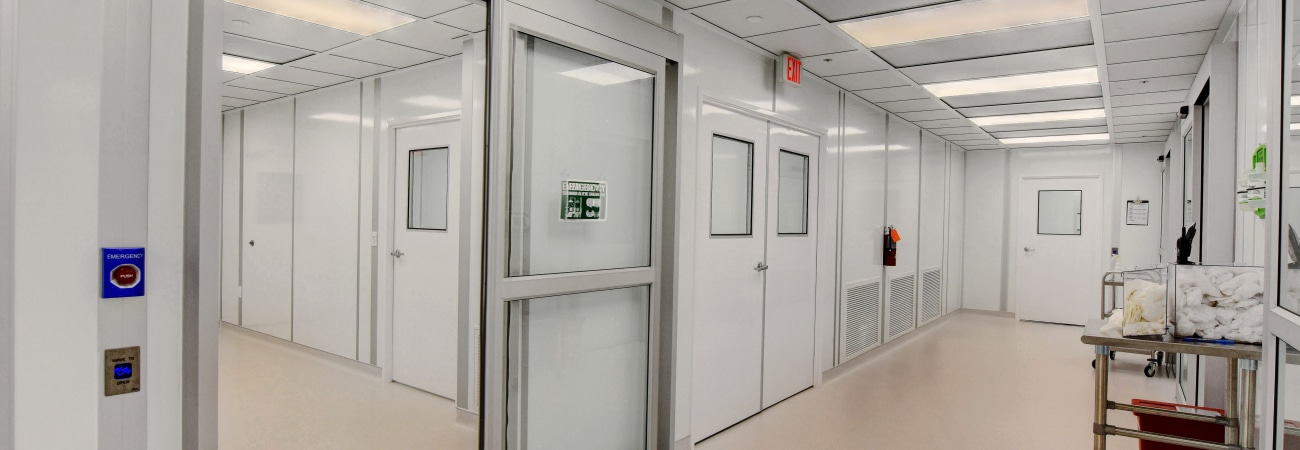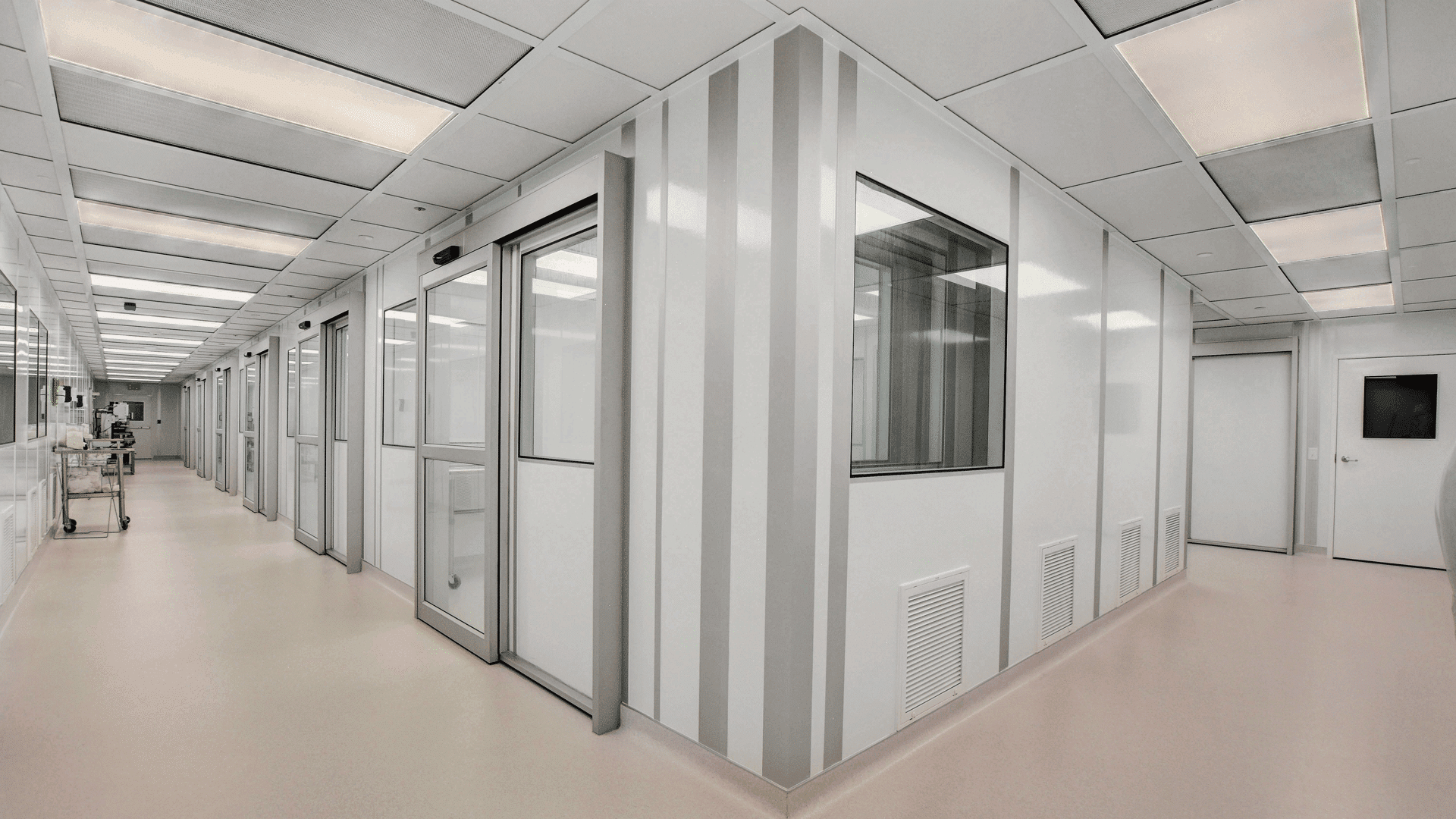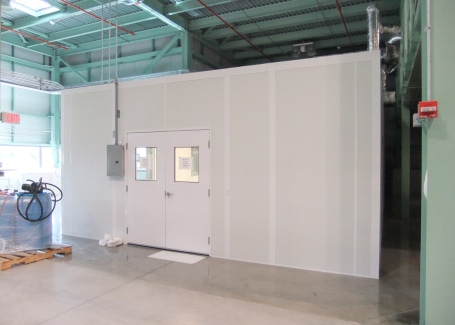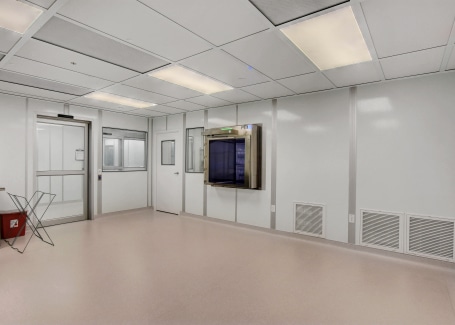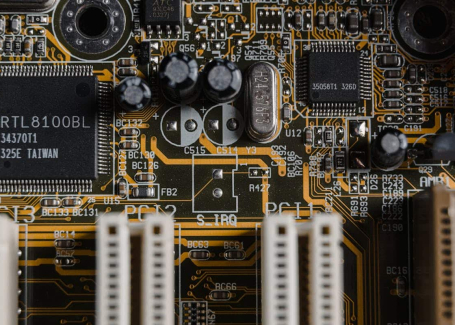Cleanroom pressure differential requirements are an important part of reaching compliance, whether through ISO 14644, USP 797/800, cGMP, or other guidelines. Ultimately, the purpose of pressure differentials is to keep air moving in the right direction, and this is a very basic requirement in the world of cleanrooms. Depending on what the cleanroom is being used for, it may need positive pressure, negative pressure, or various rooms with different pressure levels.
In this article, we’ll look at when different types of pressure are needed, what those pressure levels are, and more.
When Do Cleanrooms Use Positive Pressure?

When cleanrooms need to keep out contaminants from the outside or surrounding spaces, they are typically designed with positive pressure. All this means is that the air inside is kept at a higher pressure than the air in adjacent rooms or outside. So, when doors open, the air flows away or outward from the space.
Positive pressure is quite common in cleanrooms in general, and it is put to use in pharmaceuticals, semiconductors, electronics, aerospace, and other industries. Obviously, the emphasis here is protecting the product or research happening in the space (by preventing additional particles from entering).
It helps to think of the room like a balloon, where the air inside is more “puffed up” than surrounding areas. This small push helps move dirty air out.
How Much Pressure Are We Talking About?
In practice, the real pressure differences are tiny. For the technical readers: the differential is 0.03 to 0.05 inches of water gauge (in. w.g.). In cleanrooms, this is often measured with a Magnehelic gauge, which is a simple tool that shows the pressure difference at a glance.
To illustrate, a basic gowning room might be set at 0.03 in. w.g., while the main production room is kept slightly higher at 0.05 in. w.g. This creates what’s called a pressure cascade, where cleaner areas always “push” air into less clean ones.
This way, even when doors open or small leaks exist, airflow is always moving in the direction it’s designed to.
When Do Cleanrooms Use Negative Pressure?
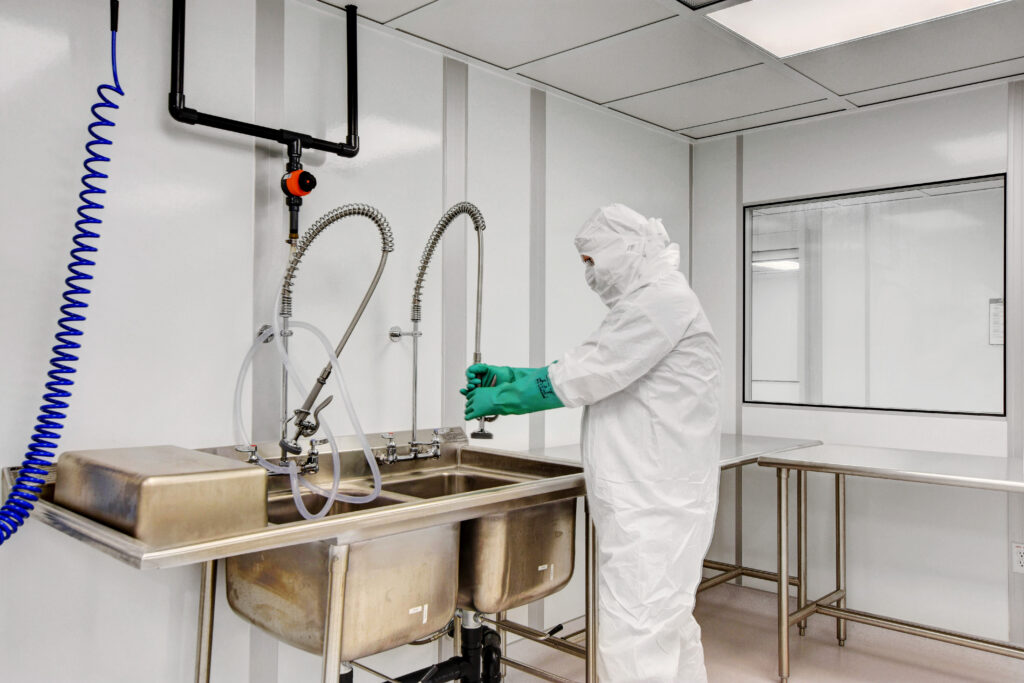
Conversely, when cleanrooms need to keep in contaminants, they often use negative pressure. As you might expect, all this means is that the air inside the space is kept at a lower pressure than adjacent areas. When doors open, or there’s a breach in the wall, air will flow in, rather than out.
But if cleanrooms are designed to limit the number of particles, why would it make use of negative pressure? Well, it is mostly used to keep dangerous particles from escaping; some examples include medicines that may be harmful if ingested, pathogens that could cause infections, and hazardous chemicals.
Negative pressure is very common in pharmacies that need to follow USP 800 guidelines, hospitals to isolate infectious disease, or in high-level biosafety labs where Ebola, COVID, and other pathogens are studied.
How Much Pressure, Exactly?
As with positive pressure spaces, negative pressure room differentials are relatively small, usually between 0.01 and 0.03 inches of water gauge (in. w.g.), depending on the hazards being contained. Some materials will require higher differentials depending on guidelines or requirements, but most hazardous rooms are kept at the lowest pressure compared to surrounding spaces.
The Bottom Line
Cleanroom pressure differential requirements exist to direct airflow, and either protect what’s inside in the case of positive pressure, or what’s outside in the case of negative pressure. In fact, they’re often combined to create a pressure cascade. Generally speaking, pressure levels are small but important, and in many cases regulations such as USP <797> and USP <800>, among others, directly require these differentials.


